“It was a leap of faith” Marcos Martin discusses The Private Eye, Image Comics, Panel Syndicate and The Walking Dead
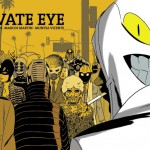 Recently crowned the best digital comic of 2015 at the Eisner’s Marcos Martin and Brian K Vaughan’s The Private Eye is about to be released as a collected print courtesy of Image Comics. We caught up with artist and co-creator Marcos to find out more about the creation of The Private Eye‘s pay-what-you-want digital publishing platform Panel Syndicate as well as learn about their future digital exclusive release – some book called The Walking Dead!
Recently crowned the best digital comic of 2015 at the Eisner’s Marcos Martin and Brian K Vaughan’s The Private Eye is about to be released as a collected print courtesy of Image Comics. We caught up with artist and co-creator Marcos to find out more about the creation of The Private Eye‘s pay-what-you-want digital publishing platform Panel Syndicate as well as learn about their future digital exclusive release – some book called The Walking Dead!
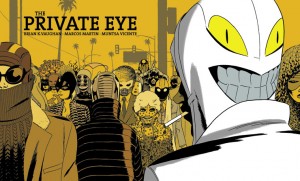
Congratulations on winning this year’s Eisner Award for best digital comic for the Private Eye, how meaningful has that been for you and Panel Syndicate?
MM: The best part is, not even winning, it’s just being nominated. Obviously its great from a personal sense, as all awards are great and it is rewarding to know that people know of your work and think that is worth it.
It’s a big name to have associated with the title – its like the Oscars of comics.
MM: I wish it had the same pull as the Oscars, we’re not quite there yet I think in terms of what it really means, even though it is referred to as the Oscars of comics, the Oscars obviously have much more of an impact than Eisners but yeah, I guess we will always be from the Eisner award nominee and Eisner award winner.
So did you win an actual prize?
MM: You actually get a prize, I actually have my Eisners here on the shelf. It is like an earth globe, it looks more like a national geographic trophy than anything else, but it’s cool yes. And its an actual physical thing.
So tell us about the beginnings of The Private Eye – which came first, the idea of creating a new series with Brian or of creating a new publishing platform?
MM: The idea for The Private Eye came first. Well actually, it depends, the idea for Panel Syndicate was mine and I started thinking about it maybe 5 years ago and the idea for The Private Eye was actually Brian’s idea and who knows how long he was thinking about that.
What was the idea you had – releasing it digitally or of creating the ‘pay-what-you-want’ pricing model?
MM: That was all part of the same idea. My idea was digital distribution and the payment method came with it. It was always supposed to be pay-what-you-want.
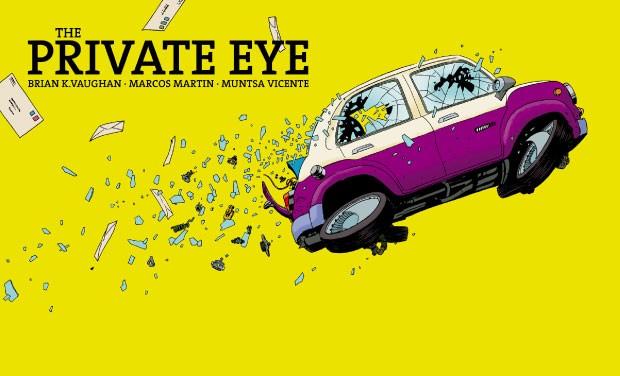
Did you find having Brian reputation helped you get more attention?
MM: Yeah, absolutely. I had been thinking about it for a few years and every time I talked about it with my friends, always the key part was to have someone with enough of a big name attached to get it off the ground. I always wondered why no big name had thought of it and decided to go with it. Its a leap of faith, especially in the way that we did with the pay-what-you-want system. I guess that the biggest analogy is when you think of a rock band and the singer jumps into the crowd and hopes that they will catch them. Well thats a little bit how it felt, the jump that we made and we hoped that someone would catch us.
Has Brian’s fanbase allowed you to be more adventurous with your story-telling thanks to his reputation with Saga?
MM: Definitely, actually when we decided to go the digital way Brian hadn’t even put out Saga yet so we didn’t even know about that, but obviously that was a big help. My name wasn’t big enough to pull this off on my own and I think you need someone with Brian’s reputation, or similar pull to his name, in order to be able to at least get this off the ground. Once it is off the ground it is easier to get lesser known authors into Panel Syndicate and take advantage of the audience that is already there. Its still difficult.
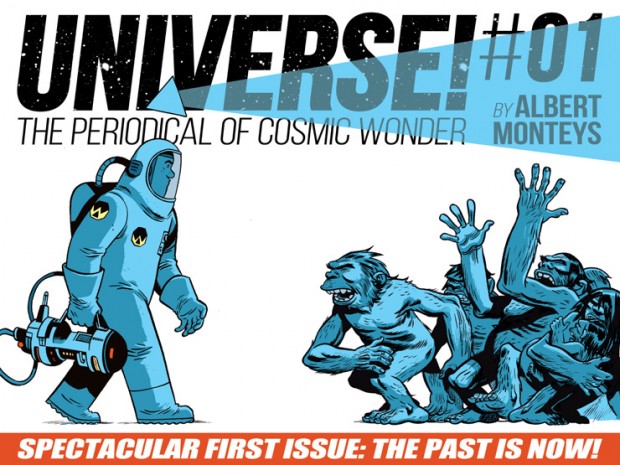
Is that what you’re trying to do with Alberty Montey’s The Universe? Use your reputation to get him success outside Europe?
MM: Yeah. Albert is actually very well know in Spain, a much bigger name than I am. But we knew that he could benefit from our audience, as it so different to the one that he has here. So we knew that it was going to be win/win for him. He would reach a wider audience and be more profitable from the money point of view.
We’re actually prouder of putting out Universe than we are of putting out our own comic books, both Brian and myself. We are happier when an issue of Universe than when we put out a version of our book. The whole idea of Panel Syndicate is to get enough creators in there, that we each help each other out.
So will there be more Panel Syndicate titles from new creators coming soon?
MM: We don’t know. I think we’d like to, but the problem is at this point, we have to chose carefully in the sense that i want to put things out that will be profitable for the creators and thats difficult as we can never assure that because of the pay-what-you-want system, because we never know if they will or not. But we know the model does work, so I think the best way to proceed right now is to get well-known creators with an audience, so that at a point when enough people know you and you have a big enough audience the lesser known creators have a bigger shot of making money out of it and can make a living out of it. Right now we are open to new creators and there might be a new series, but we cannot say for sure.
Do the majority pay or do they want it for free?
MM: Well the percentage right now is, basically 60% of the people will download for free and around 40% will pay for it, so around 60/40 which is not bad. I find that quite fascinating. I always say that one of the advantages is that you can read for free and then come back and pay later depending on the joy you have taken out of it or how much enjoyment you’ve had for it. I think its a pretty good model for both authors and readers alike. To me, one of the best parts of the project is that it brings back a bit of faith in people because its amazing how many people are actually willing to support this system when they don’t really have to.
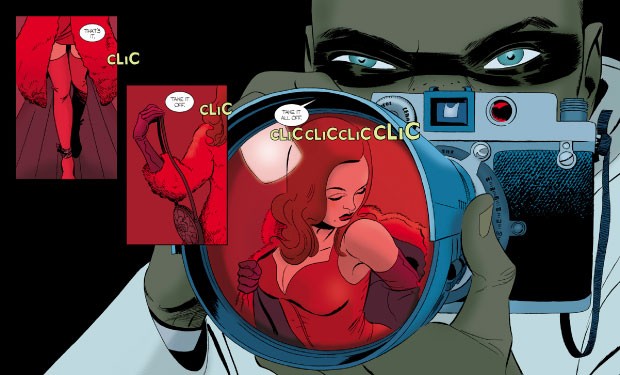
Tell us about what inspired you to create the look for the main character PI? Were there any specific inspirations for him and this new world he inhabits?
MM: I tried to look at designs from all over the world and from all periods of time but I didn’t lock myself into anything. I knew the kind of look I wanted the series to have and that was the kind of thing what made me decide when I was wondering around the internet looking for reference material. I think that the most important part to me was the fact that whoever you were confronted with any of the designs or character that they made sense to the reader. That when you see the press, in trench coats and hats and everything that it doesn’t look wrong, that it feels like that is the way it should be.
But PI has a completely different look i would say. Brian for example’s initial idea was for PI to also be in a trench coat and a hat and kind of like The Spirit, with a mask, but again I felt that would feel too much like the 40s and again it has been done so many times before which is when I went for something different with the hood and a more contemporary look. I like the idea that it was the back of the head rather than the front of it.
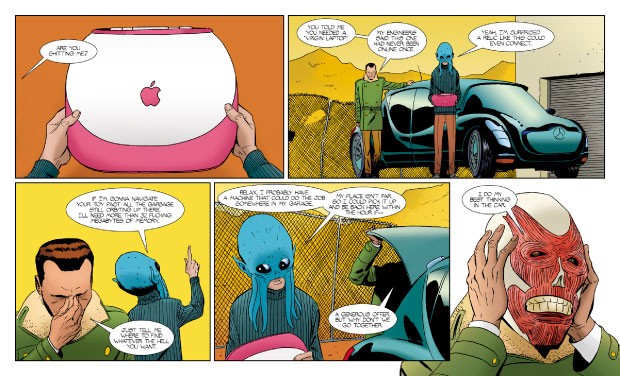
What about the modern references like Mac laptops and iPods that are included, were those there to keep the story grounded?
MM: Those references were usually in Brian’s scripts, that was his way of grounding things and also of giving some reference to the reader that we understand easily. Its like an anchor to our time, even though its happening in the future. You see this object, where they don’t understand what they are… they’re alien to them but very familiar to us and that I think helps the story. I think it works in that everything is a little bit twisted in that they look old but it’s the future but the things which are modern to us are old to us, but that’s the whole premise of the book.
For a dystopian noir, it has a very colourful setting and positive way of looking at the future, was that also part of the premise of the book all along?
MM: You say dystopian but its not really dystopian its just a different kind of utopia. One of the things Brian really wanted to showcase was the fact that without the internet, people are actually doing things in the actual world they aren’t so entrenched in the virtual world. So everything is more physical and has a more physical quality. So, it has high speed trains that go all over the city and there are plants on roof tops. It wasn’t fully explored but LA should have been covered with gardens because thats the way I thought the future would be. They would have farming systems in the cities, you can only really see it by the fact that there is green on top of the skyscrapers, and because its not important to the story its not really mentioned. These are little things that I kept in the back of my mind though, whenever i had to draw landscapes. Theres also things so you know that there have been advancements in technology, like nano pills, but there’s also no internet or computers which is really impossible to think of.
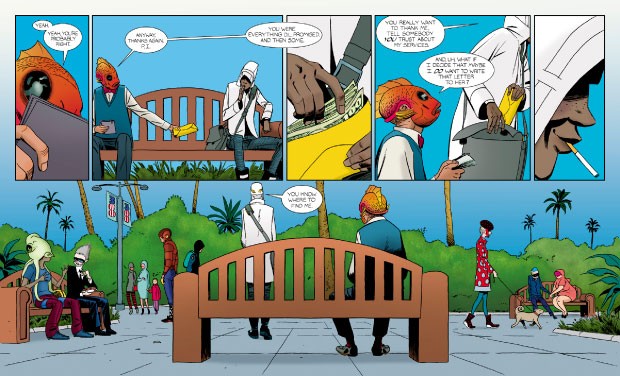
The masks are one of the most unique features of the series, were there any particular challenges in how you approached drawing and creating them?
MM: I wanted it to feel more like an evolution of fashion rather than disguises – people wouldn’t go out disguised as cowboy or an indian or a fireman. The first time that Brian told me the idea it was hard for me to understand what he was trying to tell me. [I said] “What, they’re wearing disguises all the time” and what came to me was like people at a party with disguises. So it took a while for me to figure out exactly how that would work, what would people do. How people would create. So a lot of surfing through the internet and looking for actual design from well known designers who do crazy things. Its fascinating.
You’re about to release The Private Eye as a print edition, will it still be in the same format as it was digitally?
MM: It’s been difficult to make the print version, because of the format, its been a challenge from the printer’s point of view [as its a landscape book], theres no other way. [Putting it top and bottom, was not an option] as it wouldn’t have been the same and I wouldn’t have gone for that, it was either this or not at all and Image are willing to do that.
I did make some decision just in case it did end in print in case we didn’t finish the story or if people didn’t respond. So we coloured in CMYK, instead of RGB, and there are a few technical details that were made in order that we had a possibility that if it didn’t work in a digital world which is helpful now it is available in print.
What was so appealing abot making it landscape in the first place?
MM: I was tired of looking at digital comics that you had to scroll down to see the whole page, which didn’t make any sense to me. Also if you’re not giving the idea that you’re not making your product to be seen on a computer screen which means you are not actually trusting yourself enough for that to work in the way that you are presenting it. Subconsciously you are telling the reader that I am presenting it to you like this, but what I would really like to do at one point is to publish it in print.

Were there any particular challenges to working in landscape?
MM: It’s definitely different, because the way you read landscape format is very different to the way you would normally read the usual print format. Some things I think feel more natural with the print format, the way that the eye moves along the page, because its easier to go from left to right and down and go like that ‘left, right down, left right down,’ , but with the digital landscape format its a long way from left to right and then you have to make a sharp diagonal down to the left which takes a while to get used to and to make the composition work in the way that you guide the eye the way it should be and there are a whole load of story telling decisions that are different when you’re dealing with landscape format, it takes a while. With our new project I’m doing things a little bit different, and it actually might read better than The Private Eye.
With The Private Eye at some points, Brian was writing like it was a normal issue for print so the information is laid out in a way that is very thought of for that format and I had to change it for the landscape format and so there are thing which I am not really happy with, as usual, but with the new project I think it makes more of the format. I think Universe works better with the landscape format than The Private Eye, it reads better.
What’s next? Are there any upcoming projects you can talk about?
MM: Our next project is, we’re working on it right now, again completely different from The Private Eye and is a new Panel Syndicate series. Same format, same payment model, so we’ll see if people like it and if people decide to back us on this new project and we’re hopeful that they will, Same as with The Private Eye, we have no plans to print it. even though no-one knows that and we did with the Private Eye.
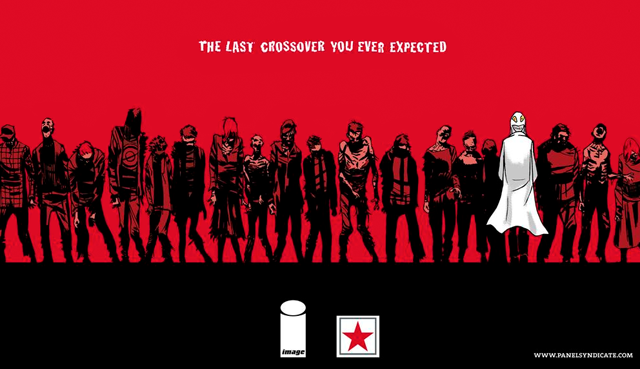
Can we ask about The Walking Dead series that was mentioned an Image Expo?
MM: That came about basically started as a conversation, kind of a joke between Robert Kirkman and Brian, because Kirkman had been wanting us to do The Private Eye at Image for a long time and had wanted to poach it, and we had said ‘no’ so many times that Brian made the joke that whenever you let us publish The Walking Dead at Panel Syndicate then we’ll let you publish The Private Eye at Image and that eventually led to us doing an actual issue of The Walking Dead. It’s written by Brian, so its going to be kind of a unique one shot issue and its going to be available only through Panel Syndicate.
Do you know when it will be available?
MM: No, unfortunately I don’t, but it won’t be long. Sometime at the beginning of next year. I’m going to say that. The first issue of our new series will come before that. And so I think the schedule will the the first issue of new series first, then Walking Dead one shot, then back to the new series.
Will it feature the main characters?
MM: That I cannot say. I’m not allowed to give any more information than what I just told you – how it came about and that it will be distributed only through Panel Syndicate.
Did you enjoy working with someone else’s characters?
MM: That would actually tell you if I was working with characters so I’m not going to answer that either!
The deluxe hardcover edition of The Private Eye will be released in the UK on December 17th purchase it here. To catch up on The Private Eye digitally visit www.panelsyndicate.com and pay-what-you-want to purchase the first 9 issues, as well as Albery Montey’s The Universe #1 and #2.



November 13, 2015 @ 8:40 pm
Exciting to read about the new projects at Panel Syndicate. I enjoyed The Private Eye, but I’m actually enjoying Universe even more. The first few issues have had some brilliantly creative ideas, so I would definitely recommend it to anyone who likes sci-fi, and in fact to anyone who enjoys comics.
November 16, 2015 @ 10:02 am
We absolutely love Universe too! Both books are so unique and original. But Universe is hilarious also!
Panel Syndicate is alive and kicking • Sturm-N-Drang Cafe
February 24, 2016 @ 12:26 am
[…] to the work of Spanish cartoonist Albert Monteys. We’re still waiting on word of the PS exclusive release of a Walking Dead story from Robert Kirkman, but their deal with Image has only increased their […]
October 10, 2016 @ 12:44 pm
Hi, I wanted to ask a question but I can’t find the Comments Box for your blog. How do I leave a comment?
October 10, 2016 @ 1:12 pm
Hi there Jonathan, leaving a comment like this is the best way to ask a question. We don’t have anything more specific than that. Or ask us via Twitter or Facebook or email us at pipedreamcomicsuk@gmail.com
August 25, 2025 @ 11:09 pm
Hello there, You’ve done a great job. I will definitely digg it and personally recommend to my friends. I am confident they will be benefited from this website. http://www.kayswell.com
August 26, 2025 @ 4:51 pm
Nice post. I learn something new and challenging on sites I stumbleupon everyday. It’s always exciting to read through content from other authors and practice a little something from other web sites. http://www.kayswell.com
August 27, 2025 @ 7:32 am
I am curious to find out what blog platform you happen to be utilizing? I’m experiencing some minor security issues with my latest blog and I would like to find something more safeguarded. Do you have any suggestions? http://www.hairstylesvip.com
August 27, 2025 @ 8:03 pm
Hello to all, the contents existing at this web page are genuinely remarkable for people knowledge, well, keep up the good work fellows. http://www.kayswell.com
August 28, 2025 @ 4:26 pm
I feel this is one of the such a lot important information for me. And i’m satisfied reading your article. But should observation on some normal issues, The site style is perfect, the articles is actually nice : http://www.kayswell.com
August 29, 2025 @ 12:58 am
I’m not that much of a internet reader to be honest but your blogs really nice, keep it up! I’ll go ahead and bookmark your site to come back down the road. Many thanks http://www.kayswell.com
August 30, 2025 @ 1:09 pm
Spot on with this write-up, I really believe this site needs much more attention. I’ll probably be returning to read through more, thanks for the info! http://www.kayswell.com
August 31, 2025 @ 7:26 am
Hi, Neat post. There is a problem with your site in web explorer, might test this? IE still is the market chief and a large component of other people will leave out your wonderful writing because of this problem. http://www.kayswell.com
August 31, 2025 @ 8:48 pm
Oh my goodness! Amazing article dude! Many thanks, However I am encountering problems with your RSS. I don’t understand the reason why I can’t join it. Is there anybody else having similar RSS issues? Anyone who knows the answer can you kindly respond? http://www.kayswell.com
September 1, 2025 @ 8:39 am
I am sure this article has touched all the internet people, its really really nice post on building up new blog. http://www.kayswell.com
September 1, 2025 @ 7:38 pm
Thanks for your help and for writing this post. It’s been great. http://www.kayswell.com
September 3, 2025 @ 5:12 pm
Sweet blog! I found it while searching on Yahoo News. Do you have any tips on how to get listed in Yahoo News?I’ve been trying for a while but I never seem to get there! Many thanks http://www.hairstylesvip.com
September 10, 2025 @ 2:32 pm
Good day! Would you mind if I share your blog with my zynga group?There’s a lot of folks that I think would really enjoy your content. Please let me know. Cheers
November 26, 2025 @ 7:36 am
https://vk.com/public211532114